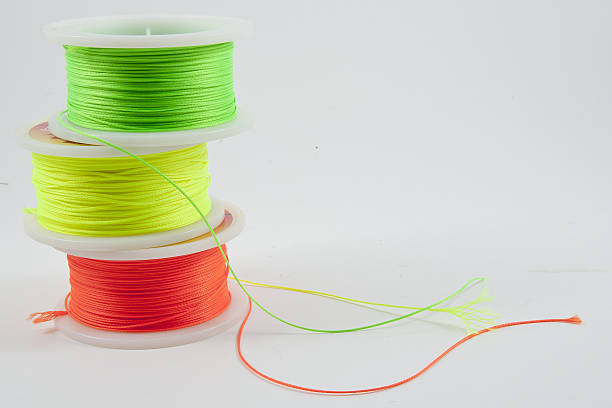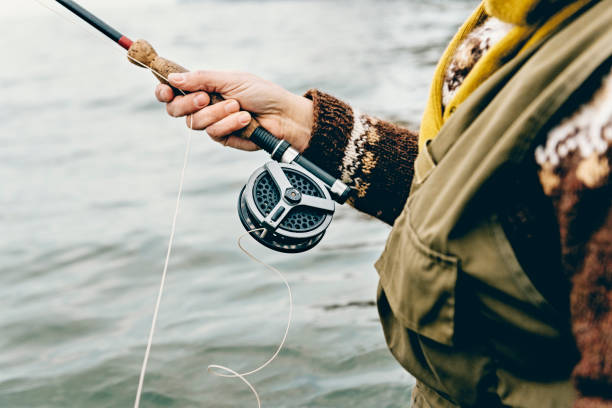Although fishing line doesn’t have a set shelf life, they can (and will) deteriorate over time. Having their line break while reeling in a large fish is the last thing any angler wants to happen. To help you respond to the question, “How long does fishing line last,” here is all the information you require.
Well, this all depends on the type of fishing line: lower quality fishing line, such as monofilament line, may only last for 1 to 3 years during storage, whereas the higher quality types of fishing line may last for up to 10 years when stored properly.
Table of Contents
How Long Does Each Type of Line Last in Storage?
Braided
More durable than any other type of fishing line available is the braided line.
Indeed, a braided line is typically the priciest type of fishing line available, and for good reason.
It typically outperforms other fishing lines in terms of toughness, weight capacity, and overall durability.
When stored properly, you can expect the braided fishing line to last anywhere from 8 to 12 years with ease. Of all the different kinds of fishing line, its shelf life is the longest.
Fluorocarbon
The fishing line made of fluorocarbon comes next on the list, and it has a shelf life that falls somewhere between that braided and monofilament lines.
Due to its low visibility, lack of stretch, and high resistance to abrasion, fluorocarbon line is often preferred.
In terms of shelf life, if properly stored, you can expect the fluorocarbon line to last for 6 to 8 years.
Monofilament
Monofilament fishing line is the least expensive kind of line available. Yes, this kind of fishing line is excellent for sensitivity and can be reasonably durable as well.
However, it does have memory issues and is sensitive to UV light, so it typically does not last as long as fluorocarbon or braided fishing line.
In terms of the shelf life, when properly stored, expect a monofilament fishing line to last about 1 to 2 years, maybe 2.5 or 3 years at the most, if you are lucky.
Does Brand Impact Line Shelf Life?
In actuality, both the type and quality of your fishing line will affect how long it lasts.
With that said, the price will matter, as it frequently does with any item you might buy.
Generally speaking, you get what you pay for, and the better a product is, the more money you are willing to spend on it.
So, despite the fact that it shouldn’t, the quality of the fishing line you purchase, including its shelf life, will depend on the brand you choose.
When looking to buy the best line with the longest shelf life, take a look at some of the top fishing line brands below.
• Berkley
• Stren
• KastKing
• PowerPro
• South Bend
• Piscifun
• American Fishing Wire

How to Store Fishing Line?
UV Light
First and foremost, fishing line will degrade fairly quickly if it is exposed to a lot of UV light or sunlight.
As a result, always keep it in a dimly lit area to prevent it from quickly deteriorating. A dark closet or storage container will do.
Moisture
Fishing line may also be sensitive to high humidity levels, especially over time, which is another consideration.
The fishing line may deteriorate due to excessive moisture. So, store it in a very dry location. The ideal setting for this is a dark box in a dry space.
Temperature
Additionally, the fishing line may deteriorate more quickly than usual in extremely hot conditions.
As a result, in addition to being kept in a dry and dark place, it should also be kept in a cool place. Even some people keep their fishing line inside refrigerators and freezers.
Reel Your Line onto Your Spool Properly
Storage is only so useful. Managing your fishing lines is another skill you must acquire. Understanding how to properly load lines onto your reel, spool, or rod will help you avoid needless damage and will keep your line from breaking or snapping while you’re out on the water. Once more, how you do this will depend on the kind of fishing line you use.
Manage Line Damage
Waiting for your fishing line to snap is not a good idea. Usually, you can tell when something has been weakened and needs a little tender loving care. Check for damage (such as nicks, scratches, or loose fibers) and make sure your line isn’t caught on your rod before using it. Recall that you have the option of trimming your line as well.
Use Your Line Properly
The bottom line is that if you use your fishing line carelessly, it won’t matter if you store it in a dark place, test it every time you look at it, or constantly check for nicks and cuts. Use fluorocarbon lines sparingly for labor-intensive (or heavy) catches that are likely to deform them, and avoid using braided lines in the water that will wear them down. In addition, please remember to recycle any unnecessary lines after using them.
How Often Should Fishing Line Be Replaced?
There is no set frequency for replacing the fishing line that has been put in storage.
Realistically, look at the expiration dates of each of the line types we covered in the introduction, and then proceed from there.
For the best results, you should probably replace the high-quality braided line after 7 to 8 years even if it has a 10-year shelf life.
Every five to six years, the fluorocarbon line should be replaced; it has an eight-year shelf life. It is a good idea to replace the monofilament line every year if it has a shelf life of two to three years.
Generally speaking, when it comes to storing fishing lines, most will advise you to replace it all every two to three years at the most, though this may be excessive with high-quality lines.
Conclusion: Store Properly
Yes, it is crucial to remember that fishing lines do wear out over time and do not last indefinitely. When you go to use the line, problems will arise if you don’t purchase a high-quality line and store it properly.


